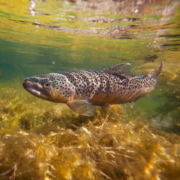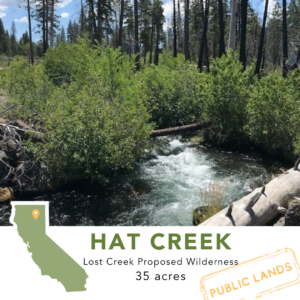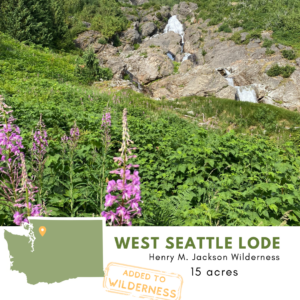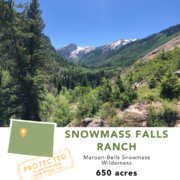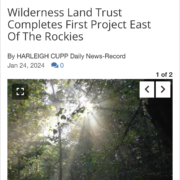February 9, 2024-
The Wilderness Land Trust is partnering with Pitkin County in a landmark conservation deal to protect the 650-acre Snowmass Falls Ranch just outside of Snowmass Village conserving two miles of valley floor filled with aspen meadows, beaver ponds, trout streams, and public trails.
Located at the foot of the Elk Range, the majority of the property lies within the boundaries of the Maroon Bells-Snowmass Wilderness. The ranch is home to diverse wilderness values: open meadows, aspen groves, spruce forest, wetlands, and riparian shrublands create a mosaic of habitat types that support a wide range of flora and fauna. It provides summer range for elk, bear, moose, mule deer, and mountain lion and hosts an active beaver complex and many bird species. A popular public trail runs through the ranch, serving as an important access point for hikers to the wilderness area. In addition to its ecological and recreation value, the ranch also holds the most senior water rights to Snowmass Creek, a significant source of water for the valley below.
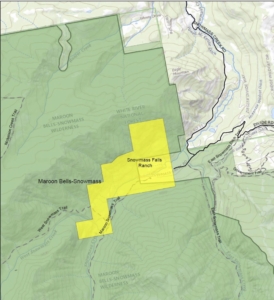
This week Pitkin County purchased the property for $34 M using Open Space Program funds. The ultimate goal is to transfer the majority of the property to public ownership as National Forest to be added to the Maroon-Bells Snowmass Wilderness. This will also allow Pitkin County to recoup most of the purchase price to reinvest in other conservation and community projects. In the interest of future management and stewardship, it is possible that a small portion including existing cabins will end up in private ownership, ideally with a conservation easement. As a project partner, the Trust’s primary roles are to help determine these boundaries with the goal of maximizing the portion to become Wilderness, and to help secure LWCF funding for the ultimate transfer to public ownership.
Within the high-end real estate market of Aspen and surrounding Pitkin County communities, properties of this size are rare and highly sought after. Currently the property is largely undeveloped, with a small cluster of primitive cabins and a public trailhead on its east side, leaving the majority of it intact and connected habitat. This conservation project is only possible today because of the caring stewardship of the property by the private owners over the last 80 years—they are a wonderful example of how conservation values can be protected under private ownership. But the likelihood of another conservation-minded buyer stepping forward when the property was listed for sale was slim, and if not protected it could have been subdivided into up to six lots and developed.
Both The Wilderness Land Trust and Pitkin County have been pursuing a conservation solution for the property for many years, and the once in a generation opportunity to protect it has finally come to fruition.
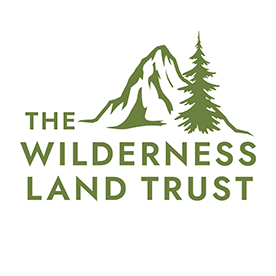



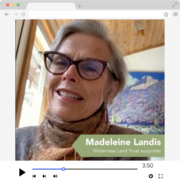
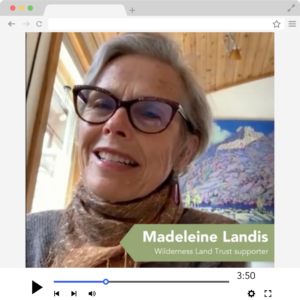
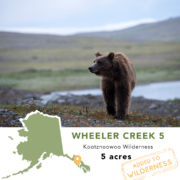
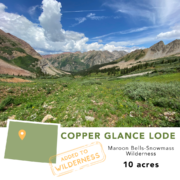
 out much of Colorado’s high country, including deep in what today is designated wilderness, traces of mining history can be found, from mine shafts still framed in timbers to bits of rusted machinery and bean cans. The majority of these silver, gold, and copper mines were small-scale, and the landscapes around them have recovered quickly, wiping away most traces of their camps and wagon trails. These small operations were certainly much different than the kinds of mega-mines we see today, removing entire mountain tops and reshaping vast landscapes to access ore. But they still serve as a reminder of what could have been. Had the boom not turned to bust so quickly, or had the lasting protections of designated wilderness not been established 60 years ago, the basins and ridges of Colorado’s high country might have looked much different today, including those surrounding the Copper Glance Lode property.
out much of Colorado’s high country, including deep in what today is designated wilderness, traces of mining history can be found, from mine shafts still framed in timbers to bits of rusted machinery and bean cans. The majority of these silver, gold, and copper mines were small-scale, and the landscapes around them have recovered quickly, wiping away most traces of their camps and wagon trails. These small operations were certainly much different than the kinds of mega-mines we see today, removing entire mountain tops and reshaping vast landscapes to access ore. But they still serve as a reminder of what could have been. Had the boom not turned to bust so quickly, or had the lasting protections of designated wilderness not been established 60 years ago, the basins and ridges of Colorado’s high country might have looked much different today, including those surrounding the Copper Glance Lode property.
